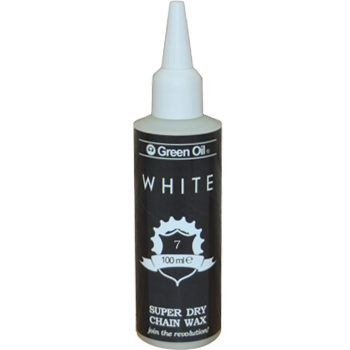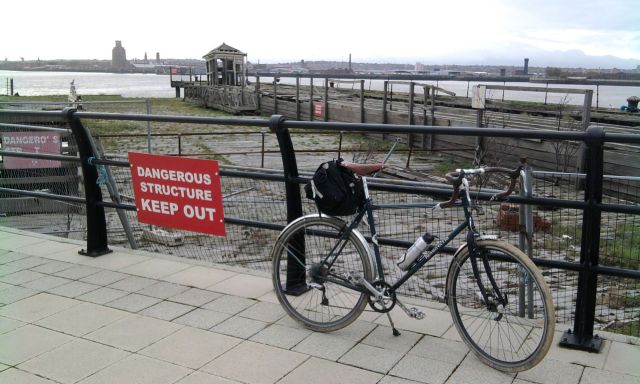
After holding out for a few days of sub zero temperatures, Liverpool finally succumbed and got its first snow of the winter last night. I awoke at around 6am to see a thin covering of the stuff on the pavement below and the prospect of a slippery and challenging commute ahead.
I went downstairs and cleared the step and the pavement outside while my wife made coffee. I wished I’d been able to continue sweeping the snow all the way down the street to the point where rush hour traffic had already obliterated it to sludge.
However, I didn’t consider driving for a second. After a car crash in last year’s snow, I’ve vowed not to drive in the white stuff unless absolutely necessary, figuring I can do a lot less damage on the bike. Just a simple case getting to the railway station a few miles away…
The Liverpool end of my journey was easy enough, the roads were only thinly dusted with powdery snow and the temperatures were already beginning to rise above freezing. However, at the other end of my rail journey, further inland in Manchester, things were pretty icy once I’d left the city centre, with packed snow and deep, rutted slush on many of the roads. A few slips and slides (but thankfully no falls) and I was in work, feeling rather pleased with myself.
All day in the office, my return journey was on my mind. “The day’s snow, slush and meltwater will turn to ice as soon as darkness falls and temperatures drop”, I thought as I sat in my warm office. And sure enough, that’s exactly what happened. However, I was committed now – the bike and I had to get back to the station.
On the way in, I’d used the canal towpath, which was great fun and blissfully traffic-free. However, now darkness had fallen it was out of the question. In low light, it would be difficult to differentiate between soft, grippy snow and slick compacted stuff. The thought slipping, unnoticed, off the edge of the path, through the ice and into the inky water below was also a pretty big factor in my decision-making process.
So the road it was. The first few hundred yards were challenging; the minor roads and paths hadn’t been gritted or cleared by traffic. However, once I was out onto the well-travelled routes, things were grippy enough and I managed to get to the station in Manchester without a glitch.
Just the final leg of the journey to contend with and I’m home and dry… Once in Liverpool there were just a few miles on mercifully clear roads to contend with. Just a few dodgy icy areas at the mouths of sideroads to keep me on the ball, then home to a well-earned meal and the warmth of the fire. More snow forecast tomorrow and freezing temperatures all week, so a few more snowy commutes ahead…

Snow Riding Tips
Although riding in the snow is a very inexact science (OK it’s a lottery) there are a few things you can do to maximise your chances of staying rubber-side down.
- Just accept that you’re going to be riding slowly – don’t fight it
- Ride big tyres – my bike has 35mm tyres all year around – this gives you a bigger contact patch. If you’ve got a mountain bike, use it.
- Ride lower pressures – I’ve dropped my tyre pressure to around 45psi – again a bigger contact patch, handles road irregularities better. If you’re running wider tyres you can go lower without risking pinch flats.
- Don’t touch the front brake. Keep your hand away from it and use the back brake progressively and judiciously. With care, you can test the level of grip by applying the back brake before trying any manoeuvres.
- Pedal smoothly in a medium gear – fast, erratic pedalling will upset the bike and lose traction – stay seated in a medium gear.
- Turn slowly and smoothly – no erratic jerks on the handlebars
- On downhill sections, regulate your speed gently with your back brake – don’t let your bike run away with you.
- Survey the road far ahead for potential slippery spots
- Ride out of the slush and in driver’s line of sight – take the lane
- Soft, untrodden snow can be very grippy but avoid hard-packed snow, it’s extremely slick.
- Avoid traffic wherever you can – you can control your riding to an extent, but you can’t control the movements of the cars around you. Look for traffic-free options when you can.
- If you do ride the roads, you’ll find that major routes are often cleared by snowploughs or the action of traffic.
- Take extra special care when passing junctions, anticipate cars failing to stop at Give Way or Stop lines
- Above all, try to relax – don’t tense up and keep everything smooth.
- Enjoy the thrill of riding in the snow!







